

PENNSYLVANIA
June 2004

1 of 1


PENNSYLVANIA
June 2004


1 of 1
Got an invite from a new herping buddy to visit his favorite Timber Rattlesnake site. Earlier in the year I found
my first wild Canebrake (the southern coastal plain variety of Crotalus horridus) but I had yet to see a northern Timber
Rattlesnake in the field. No guarantees, but Joe did find three of them the previous week at this location, so I was
really eager to join him!
We meet up early in the morning and hike our way through a beautiful park-like forest, circling round a wooded
slope till we face a massive outcropping, the hibernaculum where Timbers overwinter deep inside their den. But right
now it’s the beginning of summer and the snakes have dispersed. At this time of year females are likely to be gravid
and would seek out spots to incubate the embryos developing inside them. Rather than laying eggs, rattlesnakes give
live birth, maintaining the proper temperature for gestation by finding the right place for thermoregulation. In this
case, that means moving from the cool shade of the den site to a warmer, more exposed location.
We climb higher towards the top of the ridge, to an open spot where Joe had seen a group of basking females the
week before (no, not the beach . . . we’re still talking snakes here).
Apparently the long, flat boulders and overgrown grass offer just the right combination of temperature and
cover at these elevations. In the early morning rattlers will rest on or next to the rocks, soaking up the warmth as the
stone heats up, staying close to crevices that run under the slabs of granite. When it becomes too hot, the snakes move
out of the direct sun, retreating beneath boulders or hiding in the tall, thick grass.
Joe and I move carefully as we explore the talus slope, looking along the edges for any sign of snakes. Suddenly,
Joe sees one
―
a black-phase female basking on a boulder. It’s then that we notice the snake is opaque, but with a
color that simply amazes us. When snakes are getting ready to shed their skin, it’s normal for them to become slightly
bluish, especially around the eye caps, but the intense color of the labial scales on this snake’s face was the most
stunning either of us had ever seen on a snake in shed.
After photos we continue to poke around. Joe moves up higher to inspect a fallen tree by a mossy area when I
hear him cry out and lunge for something on the ground. “Milksnake!” he shouts. We’re very pleased, not only
because it’s a pretty one, but also because it’s unusual to find them at such elevations in this area.
Eventually we make our way to the place where Timbers were seen last week, all found around the same
boulder. We get closer, then Joe yells, “Copperhead!” and dashes for the rock as the snake disappears underneath. He
crouches down to look in the crevice while I come up from behind.
As I take a step towards Joe, something big and heavy moves by my foot, sweeping through the dense grass with
a sudden swoosh. “Don’t step back!” I shout, and we forget about the Copperhead, turning our attention now to find
the rattlesnake hiding somewhere near our feet.
At that moment I pause to think about how glad I am that just yesterday I purchased a pair of snake-proof boots,
which I’m wearing today for the first time. We peer into the grass, watching our step and listening for a rattle. A few
false glances, and eventually the snake crawls into view. This time it’s a beautiful yellow-phase Timber with pale
creamy eyes.
I was thrilled to see my first Timbers in the wild, and particularly pleased to have found one of each phase. Joe
tells me there’s lots more, plus Black Rat Snakes, especially near the den in fall and spring. I understand why he
considers it such a special place, and I’m grateful he shared it with me. Thanks, Joe.
P.S. Joe and I returned to the den in spring and found these scattered on the forest floor.
Eastern Milksnake
Lampropeltis triangulum triangulum

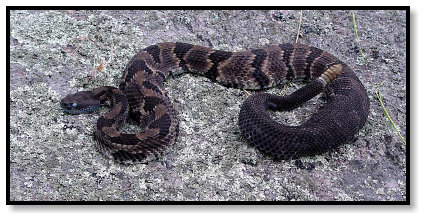
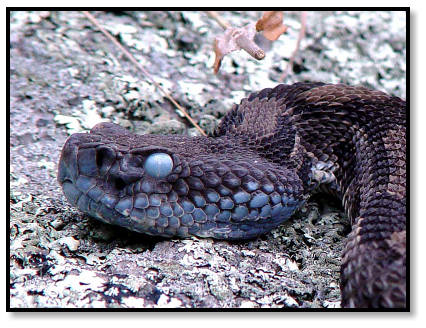
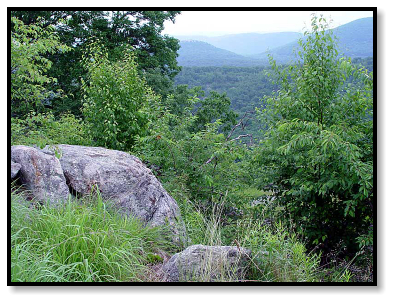
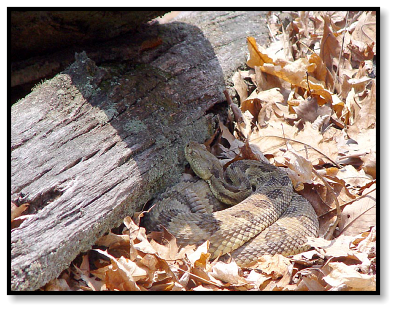
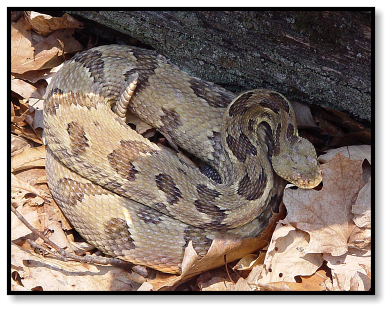
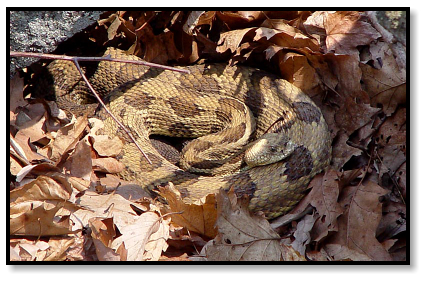
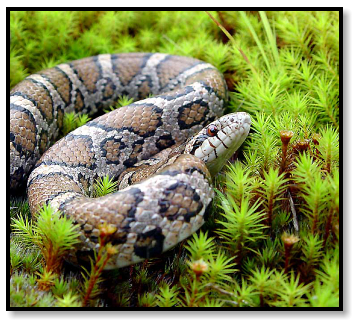
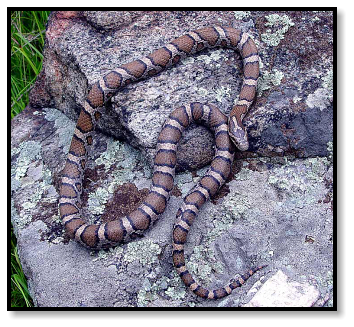
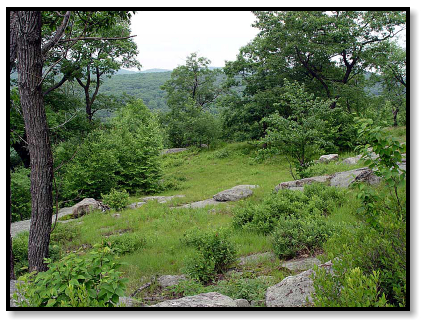
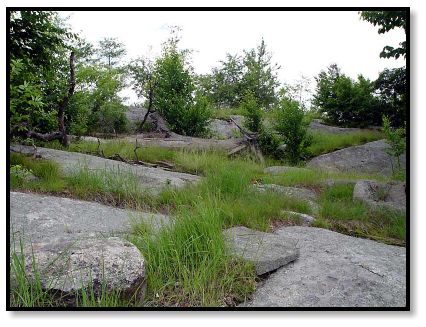

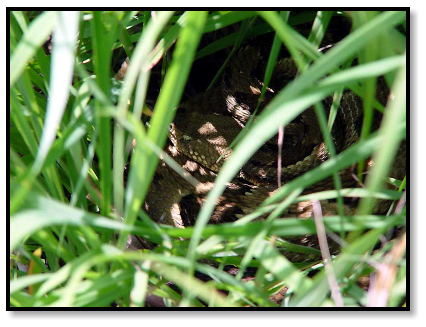

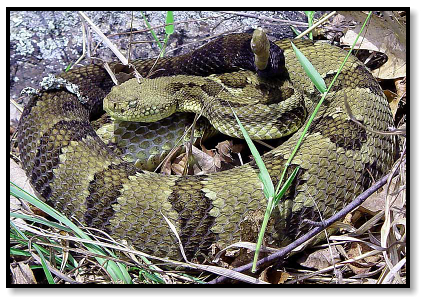
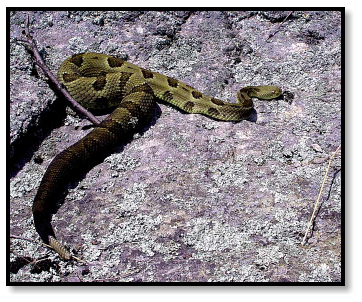
Timber Rattlesnake
Crotalus horridus







